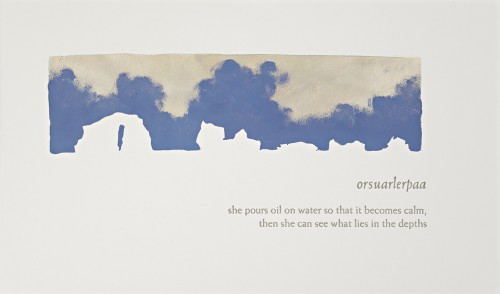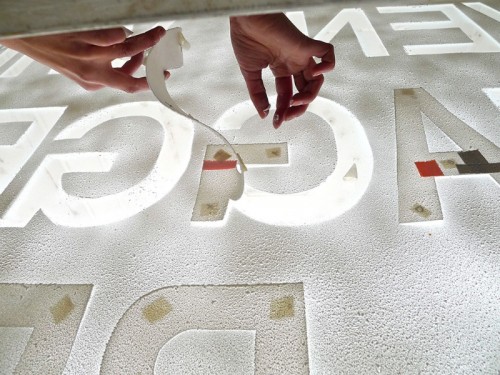I bought several pochoir brushes at an art expo in town the other day. By coincidence, I also ran across an artist’s book with pochoir illustrations called How to Say ‘I Love You’ in Greenlandic, an Arctic Alphabet by Nancy Campbell. She says
How to say ‘I love you’ in Greenlandic is an introduction to this evocative Arctic language, and presents a romantic narrative as well as a lesson in linguistics. All 12 letters of the Greenlandic alphabet are represented with words ranging from eqisimarput (‘we walk arm in arm as lovers’) to kinguneqartarpoq (‘he drinks a second brew from old coffee grounds or tea leaves’). These words and their English definitions are accompanied by a series of pochoir prints depicting icebergs. As in contemporary Arctic life, the denouement is caused by the disappearance of the ice.
Below are several spreads. She’s made a trade edition available. And a youtube video about the book.

















